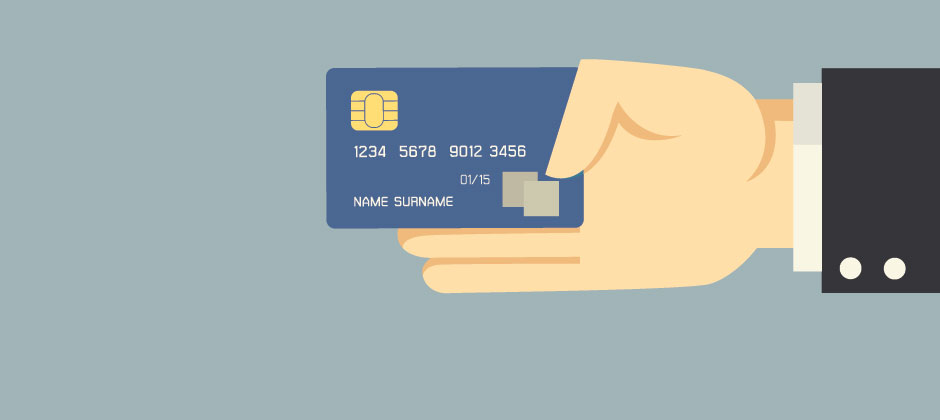Fraud & Identity Management

Loyalty fraud and the customer experience Criminals continue to amaze me. Not surprise me, but amaze me with their ingenuity. I previously wrote about fraudsters’ primary targets being those where they easily can convert credentials to cash. Since then, a large U.S. retailer’s rewards program was attacked – bilking money from the business and causing consumers confusion and extra work. This attack was a new spin on loyalty fraud. It is yet another example of the impact of not “thinking like a fraudster” when developing a program and process, which a fraudster can exploit. As it embarks on new projects, every organization should consider how it can be exploited by criminals. Too often, the focus is on the customer experience (CX) alone, and many organizations will tolerate fraud losses to improve the CX. In fact, some organization build fraud losses into their budgets and price products accordingly — effectively passing the cost of fraud onto the consumers. Let’s look into how this type of loyalty fraud works. The criminal obtains your login credentials (either through breach, malware, phishing, brute force, etc.) and uses the existing customer profile to purchase goods using the payment method on file for the account. In this type of attack, the motivation isn’t to receive physical goods; instead, it’s to accumulate rewards points — which can then be used or sold. The points (or any other form of digital currency) are instant — on demand, if you will — and much easier to fence. Once the points are credited to the account, the criminal cashes them out either by selling them online to unsuspecting buyers or by walking into a store, purchasing goods and walking right out after paying with the digital currency. A quick check of some underground forums validates the theory that fraudsters are selling retailer points online for a reduced rate — up to 70 percent off. Please don’t be tempted to buy these! The money you spend will no doubt end up doing harm, one way or another. Now, back to the customer experience. Does having lax controls really represent a good customer experience? Is building fraud losses into the cost of your products fair to your customers? The people whose accounts have been hacked most likely are some of your best customers. They now have to deal with returning merchandise they didn’t purchase, making calls to rectify the situation, having their personally identifiable information further compromised and having to pay for the loss. All in all, not a great customer experience. All businesses have a fiduciary responsibility to protect customer data with which they have been entrusted — even if the consumer is a victim of malware, phishing or password reuse. What are you doing to protect your customers? Simple authentication technologies, while nice for the CX, easily can fail if the criminal has access to the login credentials. And fraud is not a single event. There are patterns and surveillance activities that can help to detect fraud at every phase of your loyalty program — from new account opening to account logins and updates to transactions that involve the purchase of goods or the movement of currency. As fraudsters continue to evolve and look for the least-protected targets, loyalty programs have come to the forefront of the battleground. Take the time to understand your vulnerability and how you can be attacked. Then take the necessary steps to protect your most profitable customers — your loyalty program members. If you want to learn more, join us MRC Vegas 16 for our session “Loyalty Fraud; It’s Brand Protection, Not Just Loss Prevention” and hear our industry experts discuss loyalty fraud, why it’s lucrative, and what organizations can do to protect their brand from this grey-area type of fraud.

Compliance definitions LOA, CIP, FACTA, KYC — These acronyms seem endless, and navigating compliance can be both confusing and a painful drain on resources. How do you know the best approach for your institution? Should you look at regulations for Know Your Customer (KYC) or the Customer Identification Program (CIP)? What about the levels of assurance (LOAs) or the Fair and Accurate Credit Transactions Act (FACTA) Red Flags Rule? Does the USA PATRIOT Act affect your industry? The myriad guidelines, rules and mandates surrounding fraud compliance are changing the way organizations do business. Let’s start with some brief definitions. CIP/KYC The Customer Identification Program requires banks to form a reasonable belief that they know the true identity of each customer. The CIP must include procedures that specify the identifying information that will be obtained from each customer, along with reasonable and practical risk-based procedures for verifying each customer’s identity. The Know Your Customer provision is a financial regulatory rule mandated by the Bank Secrecy Act and the USA PATRIOT Act. These guidelines focus on prevention of money laundering and the use of financial institutions to finance terrorist activities. This process has three stages: the CIP, customer due diligence (CDD) and enhanced due diligence (EDD). The last two stages address customer risk from an anti–money laundering perspective. LOA/FACTA (Red Flags Rule) Levels of assurance regarding identity focus on the extent to which electronic authentication may be used to verify that the individual identified in the input data truly is the same person engaging in the electronic transaction. This can be a daunting task — even the National Institute of Standards and Technology acknowledges that electronic authentication of individual people is a technical challenge when performed remotely over an open network. To choose the level of assurance that works within your company structure, you must determine what is needed to maintain the internal compliance and risk thresholds for each business requirement. LOAs are based on two categories: trustworthiness of the identity-proofing process and trustworthiness of the credential-management function (which includes technology and implementation/management). There are four LOA levels: Minimal Assurance Moderate Assurance Substantial Assurance High Assurance The FACTA Red Flags Rule requires institutions to establish a program that identifies ecommerce “red flags.” This program should consist of a pattern, practice or specific activity that indicates the possible existence of identity theft applicable to account-opening activities, existing account maintenance and new activity on accounts that have been inactive for two years or more. Don’t be discouraged In this world of compliance regulations that read like alphabet soup, we understand the challenges of meeting regulations while providing a frictionless customer experience. When an organization strikes the perfect balance between compliance and customer service, it has a competitive advantage that can lead to additional revenue opportunities (e.g., profitably acquiring new customers, detecting fraud and reducing charge-offs, minimizing operational costs, and improving operational efficiencies). To achieve this, businesses need cost-effective, flexible tools that allow them to meet current and future guidelines, manage risk and ultimately authenticate as many true customers as possible — all while segmenting out only the real fraudsters and noncompliant identities. You can be assured that new regulations will come, existing regulations will be redefined and communications on how to comply will be difficult to interpret. To find out more about compliance, click here.

A recent Experian survey shows a growing concern over identity theft and tax fraud. 42% of consumers are concerned that someone could access their personal data through their tax return, compared with 35% in 2014 and 38% in 2015 28% of consumers have been a victim or know someone who has been a victim of tax fraud Tax season is a busy time of year for identity thieves. While consumers should take steps to protect themselves, businesses also need to employ ID theft protection solutions in order to safeguard consumer information. >> Identify and prevent multiple types of fraud

What is blockchain? Blockchain is beginning to get a lot of attention, so I thought it might be time to figure out what it is and what it means. Basically, a blockchain is a permissionless, distributed database that maintains a growing list of records (transactions) in a linear, chronological (and time-stamped) ledger. At a high level, this is how it works. Each computer connected to the network gets a copy of the entire blockchain and performs the task of validating and relaying transactions for the whole chain. The batches of valid transactions added to the record are called “blocks.” A block is the “current” part of a blockchain that records some or all of the recent transactions and once completed goes into the blockchain as a permanent database. Each time a block gets completed, a new block is created, with every block containing a hash of the previous block. There are countless numbers of blocks in the blockchain. To use a conventional banking analogy, the blocks would be a full history of every banking transaction for every person, and the blockchain would be a complete banking history. The entire blockchain is sent to everyone who has access, and every user validates the information in the block. It’s like if Tom, Bob and Harry were standing on the street corner and saw a cyclist hit by a car. Individually, all three men will be asked if the cyclist was struck by the car, and all three will respond “yes.” The cyclist being hit by the car becomes part of the blockchain, and that fact cannot be altered. Blockchain generally is used in the context of bitcoin, where similar uses of the structure are called altchains. Why should I care or, at the very least, pay attention to this movement? Because the idea of it is inching toward the tipping point of mainstream. I recently read an article that identified some blockchain trends that could shape the industry in coming months. The ones I found most interesting were: Blockchain apps will be released Interest in use cases outside payments will pick up Consortia will prove to be important Venture capital money will flow to blockchain start-ups While it’s true that much of the hype around blockchain is coming from people with a vested interest, it is beginning to generate more generalized market buzz as its proponents emphasize how it can reduce risk, improve efficiency and ultimately provide better customer service. Let’s face it, the ability to maintain secure, fast and accurate calculations could revolutionize the banking and investment industries, as well as ecommerce. In fact, 11 major banks recently completed a private blockchain test, exchanging multiple tokens among offices in North America, Europe and Asia over five days. (You can read The Wall Street Journal article here.) As more transactions and data are stored in blockchain or altchain, greater possibilities open up. It’s these possibilities that have several tech companies, like IBM, as well as financial institutions creating what has become known as an open ledger initiative to use the blockchain model in the development of new technologies that will enable a wider array of services. There is no doubt that the concept is intriguing — so much so that even the SEC has approved a plan to issue stock via blockchain. (You can read the Wired article here.) The potential is enough to make many folks giddy. The idea that risk could become a thing of the past because of the blockchain’s immutable historical record — wow. It’s good to be aware and keep an eye on the open ledger initiative, but let’s not forget history, which has taught us that (in the wise words of Craig Newmark), “Crooks are early adopters.” Since blockchain’s original and primary usage has been with bitcoin, I don’t think it is unfair to say that there will be some perceptions to overcome — like the association of bitcoin to activities on the Dark Web such as money laundering, drug-related transactions and funding illegal activities. Until we start to see the application across mainstream use cases, we won’t know how secure blockchain is or how open business and consumers will be to embracing it. In the meantime, remind me again, how long has it taken to get to a point of practical application and more widespread use of biometrics? To learn more, click here to read the original article.

According to a recent Experian Marketing Services study, 36% of companies interact with customers in five or more channels.

Ensure you’re protecting consumer data privacy Data Privacy Day is a good reminder for consumers to take steps to protect their privacy online — and an ideal time for organizations to ensure that they are remaining vigilant in their fight against fraud. According to a new study from Experian Consumer Services, 93 percent of survey respondents feel identity theft is a growing problem, while 91 percent believe that people should be more concerned about the issue. Online activities that generate the most concern include making an online purchase (73 percent), using public Wi-Fi (69 percent) and accessing online accounts (69 percent). Consumers are vigilant while online Most respondents are concerned they will fall victim to identity theft in the future (71 percent), resulting in a generally proactive approach to protecting personal information. In fact, almost 50 percent of respondents say they are taking more precautions compared with last year. Ninety-one percent take steps to secure physical information, such as shredding documents, while also securing digital information (using passwords and antivirus software). Many consumers also make sure to check their credit report (33 percent) and bank account statements (76 percent) at least once per month. There’s still room for consumers to be safer Though many consumers are practicing good security habits, some aren’t: More than 50 percent do not check to see if a Website is secure Fifty percent do not have all their Web-enabled devices password-protected because it is a hassle to enter a password (30 percent) or they do not feel it is necessary (25 percent) Fifty-five percent do not close the Web browser when they are finished using an online account Additionally, 15 percent keep a written record of passwords and PINs in their purse or wallet or on a mobile device or computer Businesses need to be responsible when it comes data privacy Customer-facing businesses must continue efforts to educate consumers about their role in breach and fraud prevention. They also need to be responsible and apply comprehensive, data-driven intelligence that helps thwart both breaches and the malicious use of breached information and protect all parties’ interests. Nearly 70 percent of those polled in a 2015 Experian–Ponemon Institute study said that the increased visibility and media reporting of breaches, including payment-related incidents, have caused their organizations to step up data security efforts. Experian Fraud & ID is uniquely positioned to provide true customer intelligence by combining identity authentication with device assessment and monitoring from a single integrated provider. This combination provides the only true holistic view of the customer and allows organizations to both know and recognize customers and to provide them with the best possible experience. By associating the identities and the devices used to access services, the true identity can be seen across the customer journey. This unique and integrated view of identity and device delivers proven superior performance in authentication, fraud risk segmentation and decisioning. For more insights into how businesses are responding to breach activities, download our recent white paper, Data confidence realized: Leveraging customer intelligence in the age of mass data compromise. For more findings from the study, view the results here.

It may seem like April is far away, but tax season in fact launches next Tuesday, January 19. And whether you’re a business or an individual, you’ll want to know if you’re eligible for any tax benefits. Thanks to a recent announcement from the Internal Revenue Service (IRS), identity theft protection will now be considered a non-taxable benefit – a nod to the rising importance of the service for all consumers in today’s security landscape. The IRS will treat identity theft protection as a non-taxable, non-reportable benefit—for any employee or company, regardless of whether they’ve experienced a data breach, or whether the identity theft protection is provided by an employer to employees or by a business to its customers. Previously, only employees or customers who were in the aftermath of a data breach could treat identity theft monitoring as a non-taxable event. But after that announcement just four months ago, several businesses suggested a data breach was not a remote risk, but rather, “inevitable.” What does this mean for companies? They can now deduct any cost of offering identity theft protection to their employees or customers. The IRS defines identity theft protection services as: Credit report and monitoring services Identity theft insurance policies Identity restoration services Other similar services It’s important to note that these don’t need to be reported on either W-2 or 1099-MISC forms. However, this new policy won’t apply to cash given to employees or customers in place of identity protection services. Perhaps the change in defining what qualifies was spurred by the IRS’s need to provide identity theft protection last summer, as its online database of past-filed returns and other documents was hacked. That breach affected over 300,000 individuals. Whatever the reason, the announcement means this is a perfect time to sign up for identity theft monitoring services. You can do so through an employer or directly with a retailer. Particularly for individuals, the ability to receive tax benefits while knowing your personally identifiable information is safe and secure is a great feeling. For existing subscribers, upgrading to premium services may now be a more viable option. Does your company offer identity theft protection and monitoring as an employee benefit? If not, would this announcement change their minds? Visit our website for more information on identity protection products you can offer your customers. Learn more

Looking at true fraud rate I’ve talked with many companies over the years about their fraud problems. Most have a genuine desire to operate under the fraud prevention model and eliminate all possible fraud from their systems. The impact on profit is often the primary motivation for implementing solutions, but in reality most companies employ a fraud management schema, offsetting the cost of fraud with the cost of managing it. There are numerous write-ups and studies on the true cost of fraud. What most people don’t realize is that, for each item lost to fraud, a business operating on 10 percent net profit margins will need to sell 10 times the amount of product in order to recover the expense associated with the loss. These hard costs don’t include the soft dollar costs, such as increased call center expenses to handle customer calls. Recently, some organizations have started to add reputational risk into their cost-of-fraud equation. With the proliferation of social media, a few unhappy customers who have been victims of fraud easily can impact an organization’s reputation. This is an emerging fuzzy cost that eventually can be tied back to lost revenue or a drop in share price. Most companies say with pride that their acceptable fraud rate is zero. But when it comes time to choose a partner in fraud detection, it almost always comes down to return on investment. How much fraud can be stopped — and at what price? More informed organizations take all operational expenses and metrics into consideration, but many look at vendor price as the only cost. It’s at this point that they start to increase their acceptable fraud rate. In other words, if — hypothetically — Vendor A can stop only 80 percent of the fraud compared with Vendor B, but Vendor A costs less than 80 percent of what Vendor B costs, they’ll choose Vendor A. All of a sudden, their acceptable fraud rate is no longer zero. This method of decision making is like saying we’ll turn off the security cameras for 20 percent of the day because we can save money on electricity. On the surface, I understand. You have to be accountable to the shareholders. You have to spend and invest responsibly. Everyone is under pressure to perform financially. How many executives, however, take the time to see where those lost dollars end up? If they knew where the money went, would they change their view? We must be vigilant and keep our acceptable fraud rate at zero.

Payments and the Internet of things has been colliding for a while now – and it surfaced again recently with Mastercard announcing that it is working with an array of partners including Capital One to launch payments in connected devices. The thinking here seems to be that payments is a function in the Marlow’s pyramid of needs for any new consumer device. I am conflicted on this point – not that I don’t believe the Internet of Things isn’t important, but that we may be overthinking in how payments is important to be shoved inside everything that has a radio baked in. And not everything will have a radio in the future, and the role of a smartphone as the center of the connected device commerce universe isn’t going away. It is important to keep perspective here – as this announcement is less about coat sleeves hiding NFC chips with tokenized credit cards – rather it’s the commerce enablement of devices that we may carry on our person so that they can be armed for payment. Though I may disagree on whether a coat sleeve or jewelry are essential end-points in commerce, a platform of capabilities to challenge, authenticate and verify, and ultimately trust and provision a tokenized representation of something, whether its a card or a fragment of a consumer's identity, to a device that itself represents a collection of radios and sensors is very exciting. It is exciting because as device counts and assortments grow, they each have their own residual identity as a combination of things and behaviors that are either deterministic or probabilistic. The biggest shift we will see is that the collective device identities can be a far better and complete representation of customer identity that the latter will be replaced by the former. Name-centric identities will give away to algorithmically arrived ones. As Dan Geer puts it, no longer will I need to announce that I am Cherian, but my collection of devices will indeed do so on my behalf, perhaps in consultation with each other. More over, none of these devices need to replicate my identity in order to be trusted and tethered, either. Coming back to Payments, today my Fitbit’s claim to make a successful payment is validated way before the transaction, when I authorized provisioning by authenticating through a bank app or wallet. What would be interesting is when the reverse becomes true – when these class of devices that I own can together or separately vouch for my identity. We may forget usernames and passwords, fingerprints may prove to be irrevocable and rigid, but we will always be surrounded by a fog of devices that each carry a cryptographically unique and verifiable signature. And it will be up to the smartphone, its ecosystem and the devices that operate in its periphery to individually negotiate and establish trust among each of them. So this is why I believe the MasterCard effort in tokenizing devices is important when you view it in conjunction with the recent launch of SwiftID from CapitalOne. Payments getting shoved in to everyday things like wearables, disguises the more important effort of becoming a beachhead in establishing trust between devices, by using tokenization as the method of delivery. As you may have gathered by now, I am less excited of pushing cards in to devices (least of all – cars!) and more about how a trusted framework to carve out a tamper proof and secure cache within an untrusted device, along with the process to securely provision a token or a signed hash representing something of value, can serve as the foundation for future device – and by extension – user identity. On a side note, here’s a bit about pushing cards in to cars, and mistaking them for connected cars. To me there are only two connected car classes today. One is Tesla where each car on the road is part of the whole, each learning separately and together as they examine, encounter and learn the world around them to maneuver safely. The other is a button in an app that I hit to have a car magically appear in front of me. Other than Tesla and Uber, there are no other commercial instances of a connected car that appeals (Google has no cars you can buy, yet).

Leveraging customer intelligence in the age of mass data compromise Hardly a week goes by without the media reporting a large-scale hack of sensitive personal or account information. Increasingly, the public seems resigned to believe that such compromises are the new normal, producing a kind of breach fatigue that may be lowering the expectations consumers have for identity and online security. Still, businesses must be vigilant and continue to apply comprehensive, data-driven intelligence that helps to thwart both breaches and the malicious use of breached information and to protect all parties’ interests. We recently released a new white paper, Data confidence realized: Leveraging customer intelligence in the age of mass data compromise, to help businesses understand how data and technology are needed to strengthen fraud risk strategies through comprehensive customer intelligence. At its core, reliable customer intelligence is based on high-quality contextual identity and device attributes and other authentication performance data. Customer intelligence provides a holistic, bound-together view of devices and identities that equips companies and agencies with the tools to balance cost and risk without increasing transactional friction and affecting the customer experience. In the age of mass data compromise, however, obtaining dependable information continues to challenge many companies, usually because consumer-provided identities aren’t always unique enough to produce fully confident decisioning. For more information, and to get a better sense of what steps you need to take now, download the full white paper.

Customer Experience during the holiday shopping season During the holidays, consumers transact at a much greater rate than any other time of the year. Many risk-management departments respond by loosening the reins on their decision engines to improve the customer experience — and to ensure that this spike does not trigger a response that would impede a holiday shopper’s desire to grab one more stocking stuffer or a gift for a last-minute guest. As a result, it also is the busy season for fraudsters, and they use this act of goodwill toward your customers to improve their criminal enterprise. Ultimately, you are tasked with providing a great customer experience to your real customers while eliminating any synthetic ones. Recent data breaches resulted in large quantities of personally identifiable information that thieves can use to create synthetic identities being published on the Dark Web. As this data is related to real consumers, it can be difficult for your identity-authentication solution to determine that these identities have been compromised or fabricated, enabling fraudsters to open accounts with your organization. Experian’s Identity Element Network™ can help you determine when synthetic identities are at work within your business. It evaluates nearly 300 data-element combinations to determine if certain elements appear in cyberspace frequently or are being used in combination with data not consistent with your customer’s identity. This proven resource helps you manage fraud across the Customer Life Cycle and hinder the damage that identity thieves cause. Identity Element Network examines a vast attribute repository that grows by more than 2 million transactions each day, revealing up-to-date fraud threats associated with inconsistent or high-risk use of personal identity elements. Our goal is to provide the comfort of knowing that you are transacting with your real customers. Don’t get left in the cold this holiday season — fraudsters are looking for opportunities to take advantage of you and your customers. Contact your Experian account executive to learn how Identity Element Network can help make sure you are not letting fraudsters exploit the customer experience intended for your real customers. Learn more about the delicate balance between customer and criminal by viewing our fraud e-book.

Electronic signatures and their emerging presence in our Internet-connected world I had the opportunity to represent Experian at the eSignRecords 2015 conference in New York City last week. The concept of electronic signature, while not new, certainly has an emerging presence in the Internet-connected world — as evidenced by the various attendee companies that were represented, everything from home mortgages to automobiles. Much of the discussion focused on the legal aspects of accepting an electronic signature in lieu of an in-person physical signature. The implications of accepting this virtual stamp of approval were discussed, as well as the various cases that already have been tried in court. Of course, the outcome of those cases shapes the future of how to properly integrate this new form of authorization into existing business processes. Attendees discussed the basic concept of simply accepting a signature on an electronic pad as opposed to one written on a piece of paper. That act alone has many legal challenges even though it provides the luxury of in-person authentication through a face-to-face meeting. The complexities and risk increase exponentially when these services are extended over the Internet. The ability to sign documents virtually opens up a whole new world of business opportunities, and the concept certainly caters to the consumer’s need for convenience. However, the anonymity of the Internet presents the everyday challenge of balancing consumer expectations of greater ease of use with necessary fraud prevention measures. Ultimately, it always comes back to understanding who is actually signing that document. All of this highlights the need for robust authentication and security measures. As more and more legal documents and contracts are passed around virtually, the opportunity to properly screen and verify who has access to the documents gets more critical. Many organizations still rely on the tried-and-true method of knowledge-based authentication (KBA), while many others have called for its end. KBA continues to soldier on as an effective way to ensure that people on the other end of the wire are who they say they are by asking questions that — presumably — only they know the answers to. In most cases, KBA is viewed as a “check the box” step in the process to satisfy the lawyers. In certain cases, that’s all you need to do to ensure compliance with legal policy or regulatory requirements. It starts to get tricky is when there’s more on the line than just “check the box” actions. When the liability of first- or third-party fraud, becomes greater than simple compliance, it’s time to implement tighter security, while at the same time limiting the amount of friction caused by the process. Many in attendance discussed the need for layers of authentication based on the type of documents that are being processed and handled. This speaks directly to the point that one size does not fit all. As the industry matures and acceptance of e-signatures increases, so too does the need for more robust, flexible options in authentication. Another topic — that was quite frankly foreign to everyone we talked to — was the need for security around the concept of account takeover. When discussing this type of fraud, most attendees did not even consider this to be a hole in their strategy. Consider this fictional scenario. I’m responsible for mergers and acquisitions for my publicly traded company. I often share confidential information via electronic means, leveraging one of the many electronic signature solutions on the market. I become a victim of a phishing attack and unknowingly provide my login credentials to the fraudster. The fraudster now has access to every electronic document that I have shared with various organizations — most of which have been targets for mergers and acquisitions. Fraudsters are creative. They exploit new technologies — not because they’re trendsetters, but because oftentimes these new technologies fail to consider how fraudsters can benefit from the system. If you are considering adopting e-signature as a formal process, please consider implementing: Flexible levels of authentication based on the risk and liability of the documents that are being presented and what they are protecting FraudNet for Account Takeover, which enhances security around access to these critical documents to protect against data breaches Not only the needs and experiences of your own business, but customer needs as well to enable to the best possible customer interactions If you haven’t considered implementing e-signature technology into your business process, you should — but be sure to have your fraud team present when considering the implementation.

We all know that first party fraud is a problem. No one can seem to agree on the definitions of first party fraud and who is on the hook to find it, absorb the losses and mitigate the risk going forward. More often than not, first-party fraud cases and associated losses are simply combined with the relatively big “bucket” of credit losses. More importantly, the means of quickly detecting potential first-party fraud, properly segmenting it (as either true credit risk or malicious behavior) and mitigating losses associated with it usually lies within more general credit policies instead of with unique, targeted strategies designed to combat this type of fraud. In order to create a frame of reference, it’s helpful to have some quick — and yes, arguable — definitions: Synthetic identity: the fabrication of an identity with the intention of perpetrating fraudulent applications for, and access to, credit or other financial services Bust-out: the substantive building of positive credit history, followed by the intentional, high-velocity opening of several new accounts with subsequent line utilization and “never payment” Default payment: intentionally allowing credit lines to default to avoid payments Straight-roller: an account opened with immediate utilization followed by default without any attempt to make a payment Never pay: a form of straight-roller that becomes delinquent within the first few months of opening the account So what’s a risk manager to do? In my opinion, the best methods to consider in the fight against first-party fraud include analytical solutions that take multiple data points into consideration and focus on a risk-based approach. For my money, the four most important are: Models and scores developed with the proper set of identity and credit risk attributes derived from current and historic identity and account usage patterns (in other words, ANALYTICS) — Used at both the account opening and account management phases of the Customer Life Cycle, such analytics can be customized for each addressable market and specific first-party fraud threat The monitoring of individual identity elements at a portfolio level and beyond — This type of monitoring and LINK ANALYSIS allows organizations to detect the creation of synthetic identities Reasonable (e.g., one-to-one) identity and device associations over time versus a cluster of devices or coordinated attacks stemming from a single device — Knowing a customer’s device profile and behavioral usage with DEVICE INTELLIGENCE provides assurance that applications and account access are conducted legitimately Leveraging industry experts who have worked with other institutions to design and implement effective first-party fraud detection and loss-mitigation strategies — This kind of OPERATIONAL CONSULTING can save time and money in the long run and afford an opportunity to avoid mistakes By active use of these methods, you are applying a risk-based approach that will allow you to realize substantial savings in the forms of loss reduction and operational efficiencies associated with non-acquisition of high-risk first-party fraud applications, more effective credit line management of potentially high-risk accounts, better segmentation of treatment strategies and associated spend against high-risk identities, and removal of first-party fraud accounts from traditional collections processes that will prove futile. Download our recent White Paper, Data confidence realized: Leveraging customer intelligence in the age of mass data compromise, to understand how data and technology are needed to strengthen fraud risk strategies through comprehensive customer intelligence.

Profile of an online fraudster I recently read a study about the profile of a cybercriminal. While I appreciate the study itself, one thing it lacks perspective on is an understanding of how identity data is being used to perpetrate fraud in the online channel. One may jump to conclusions about what is a good indicator for catching fraudsters. These very broad-brush observations may result in an overwhelming number of false positives without digging in deeper. Purchase value A single approach for understanding the correlation between purchase value and fraud does not work to best protect all businesses. Back in 2005, we saw that orders under $5 were great indicators of subsequent large-ticket fraud. For merchants that sell large-ticket items, such as electronics, those same rules may not be effective. To simply believe that the low dollar amount is the extent of the crime and not just a precursor to the real, bigger crime indicates a lack of understanding of how fraudsters work to manipulate a system. For some merchants, where fraudsters know they can go to do card testing against their business, low-dollar-amount rules may apply. However, for other businesses a different set of rules must be put into place. Time of day We have been tracking fraud time of day as a rule since 2004, but the critical point is a clear definition of which time of day. For the merchant, 3 a.m. is very different than 3 a.m. for a fraudster who is in Asia or Eastern Europe, where 3 a.m. merchant time is actually the middle of the online fraudster’s day. FraudNet is designed to identify the time from the user’s device and runs its rules from the user’s time. We find that every individual business will have a very specific threat profile. Businesses need to build their individual fraud strategy around their overall attack rate taking into account the strength of the defense and the ability to be flexible to accommodate the nuances for individual consumers. A general approach to fraud mitigation inevitably results in a system that begins to chase broad averages, which leads to excessive false positives and mediocre detection. That’s what drives us to do the job better. The proof of every fraud solution should lie in its ability to catch the most fraud without negatively impacting good customers.

What the EMV Shift means for you I recently facilitated a Webinar looking at myths and truths in the market regarding the EMV liability shift and what it means for both merchants and issuers. I found it to be a very beneficial discussion and wanted to take some time to share some highlights from our panel with all of you. Of course, if you prefer to hear it firsthand, you can download the archive recording here. Myth #1: Oct. 1 will change everything Similar to the hype we heard prior to Y2K, Oct. 1, 2015, came and went without too much fanfare. The date was only the first step in our long and gradual path to EMV adoption. This complex, fragmented U.S. migration includes: More than 1 billion payment cards More than 12 million POS terminals Four credit card networks Eighteen debit networks More than 12,000 financial institutions Unlike the shift in the United Kingdom, the U.S. migration does not have government backing and support. This causes additional fragmentation and complexity that we, as the payments industry, are forced to navigate ourselves. Aite Group predicts that by the end of 2015, 70 percent of U.S. credit cards will have EMV capabilities and 40 percent of debit cards will be upgraded. So while Oct. 1 may not have changed everything, it was the start of a long and gradual migration. Myth #2: Subscription revenues will plummet due to reissuances According to Aite, EMV reissuance is less impactful to merchant revenues than database breaches, since many EMV cards are being reissued with the same pan. The impact of EMV on reoccurring transactions is exaggerated in the market, especially when you look at the Update Issuer provided by the transaction networks. There still will be an impact on merchants, coming right at the start of the holiday shopping season. The need for consumer education will fall primarily on merchants, given longer lines at checkout and unfamiliar processes for consumers. Merchants should be prepared for charge-back amounts on their statements, which they aren’t used to seeing. Lastly, with a disparate credit and debit user experience, training is needed not just for consumers, but also for frontline cashiers. We do expect to see some merchants decide to wait until after the first of the year to avoid impacting the customer experience during the critical holiday shopping season, preferring to absorb the fraud in the interest of maximizing consumer throughout. Myth #3: Card fraud will decline dramatically We can look to countries that already have migrated to see that card fraud will not, as a whole, decline dramatically. While EMV is very effective at bringing down counterfeit card fraud, organized crime rings will not sit idly by while their $3 billion business disappears. With the Canadian shift, we saw a decrease in counterfeit card loss but a substantial increase in Card Not Present (CNP) fraud. In Canada and Australia, we also saw a dramatic, threefold increase in fraudulent applications. When criminals can no longer get counterfeit cards, they use synthetic and stolen identities to gain access to new, legitimate cards. In the United States, we should plan for increased account-takeover attacks, i.e., criminals using compromised credentials for fraudulent CNP purchases. For merchants that don’t require CVV2, compromised data from recent breaches can be used easily in an online environment. According to Aite, issuers already are reporting an increase in CNP fraud. Fraudsters did not wait until the Oct. 1 shift to adjust their practices. Myth #4: All liability moves to the issuer EMV won’t help online merchants at all. Fraud will shift to the CNP channel, and merchants will be completely responsible for the fraud that occurs there. We put together a matrix to illustrate where actual liability shifts and where it does not. Payments liability matrix Note: Because of the cost and complexity of replacing POS machines, gas stations are not liable until October 2017. For more information, or if you’d like to hear the full discussion, click here to view the archive recording, which includes a great panel question-and-answer session.